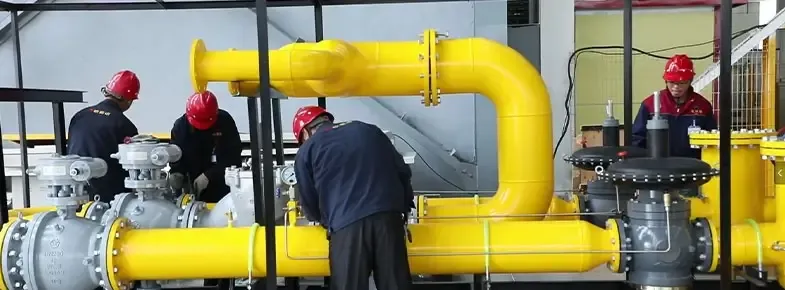
7 月 . 11, 2024 01:44
Back to list
Pressure containers and their importance in engineering applications for various industries.
Pressure vessels play a critical role in many industrial processes, providing a safe containment for a variety of fluids and gases under high pressure. These vessels are commonly used in industries such as oil and gas, chemical processing, power generation, and pharmaceuticals, among others.
The design and construction of pressure vessels must adhere to strict standards and regulations to ensure the safety of workers and the surrounding environment. This includes considerations such as material selection, wall thickness, welding procedures, and non-destructive testing.
One of the most important aspects of pressure vessel design is material selection. The material must be able to withstand the high pressure and temperature conditions inside the vessel, as well as the corrosive effects of the contained fluid. Common materials used for pressure vessels include carbon steel, stainless steel, and aluminum, among others.
The wall thickness of the pressure vessel is another important factor in ensuring its structural integrity. The thickness of the vessel walls must be calculated carefully to withstand the internal pressure without deforming or failing. Thicker walls are typically used for higher pressure applications, while thinner walls are suitable for lower pressure environments.
Welding procedures are critical in the fabrication of pressure vessels, as improper welding can lead to weak points and potential failure under pressure

pressure vessel. Welders must be trained and certified to perform the necessary welds according to industry standards. Non-destructive testing methods, such as radiography and ultrasonic testing, are used to inspect welds and ensure their quality. Pressure vessels must also be equipped with safety devices, such as relief valves, to prevent over-pressurization and potential explosions. These devices are designed to relieve excess pressure and protect the vessel from catastrophic failure. Regular inspection and maintenance of pressure vessels are essential to ensure their continued safe operation. This includes visual inspections, pressure testing, and monitoring of corrosion and wear. Any signs of damage or deterioration must be addressed promptly to prevent potential accidents. In conclusion, pressure vessels are a critical component of many industrial processes, providing a safe containment for fluids and gases under high pressure. The design, construction, and maintenance of these vessels must adhere to strict standards to ensure their safety and reliability. By following proper procedures and guidelines, pressure vessels can continue to play a vital role in industrial operations.

pressure vessel. Welders must be trained and certified to perform the necessary welds according to industry standards. Non-destructive testing methods, such as radiography and ultrasonic testing, are used to inspect welds and ensure their quality. Pressure vessels must also be equipped with safety devices, such as relief valves, to prevent over-pressurization and potential explosions. These devices are designed to relieve excess pressure and protect the vessel from catastrophic failure. Regular inspection and maintenance of pressure vessels are essential to ensure their continued safe operation. This includes visual inspections, pressure testing, and monitoring of corrosion and wear. Any signs of damage or deterioration must be addressed promptly to prevent potential accidents. In conclusion, pressure vessels are a critical component of many industrial processes, providing a safe containment for fluids and gases under high pressure. The design, construction, and maintenance of these vessels must adhere to strict standards to ensure their safety and reliability. By following proper procedures and guidelines, pressure vessels can continue to play a vital role in industrial operations.
Latest news
-
Unlocking The Quality Gas Pressure ReducersNewsNov.01,2024
-
The Role of Gas Pressure Reducing StationsNewsNov.01,2024
-
The Importance and Functionality of Safety Relief ValvesNewsNov.01,2024
-
The Essential Role of Safety Valves in Natural Gas ApplicationsNewsNov.01,2024
-
The Essential Role of Gas Pressure RegulatorsNewsNov.01,2024
-
Enhance Your Premium Gas FiltersNewsNov.01,2024

